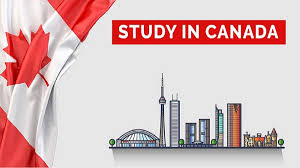Canada Updates Post-Graduation Work Permit (PGWP) Rules for 2025, Aligning with Labour Market Needs

Canada Updates Post-Graduation Work Permit (PGWP) Rules for 2025, Aligning with Labour Market Needs
In a sweeping policy update aimed at better aligning immigration outcomes with labour market realities, the Canadian government has introduced major reforms to the Post-Graduation Work Permit (PGWP) program effective in 2025. These changes are designed to ensure that international graduates who stay in Canada after completing their studies are better matched to sectors facing workforce shortages.
The reforms, announced by Immigration, Refugees and Citizenship Canada (IRCC), mark a strategic shift from open eligibility to occupation-focused retention, reinforcing Canada’s goal of using immigration as a long-term economic tool.
🔍 What’s Changing in 2025?
1. 🔒 Program-Specific PGWP Eligibility
Starting in 2025, not all academic programs will qualify for a PGWP. Instead, eligibility will be linked to fields of study and occupations that match Canada’s labour market needs.
Ineligible Programs (Examples):
- General business diplomas without specialization
- Short-term language programs
- Hospitality programs from unaccredited private institutions
Priority Eligible Fields:
- Healthcare and Nursing
- Construction and Skilled Trades
- Engineering and Advanced Manufacturing
- STEM Fields (AI, Data Science, Cybersecurity)
- Early Childhood Education
- Agriculture and Food Processing
- Francophone-focused programs (outside Quebec)
2. 📍 Province-Aligned Eligibility
Provinces now play a direct role in determining which institutions and programs remain eligible. Each province will publish a list of recognized programs tied to regional economic strategies, labor shortages, and infrastructure capacity.
For example:
- Ontario may prioritize tech and construction
- British Columbia may focus on healthcare and clean energy
- Alberta may emphasize agriculture and trades
3. 🕒 Variable PGWP Duration Based on Program Relevance
- Up to 3 years for programs in priority occupations
- 1–2 years for other approved academic programs
- No PGWP for programs deemed misaligned or from unrecognized institutions
🧑🎓 Why the Change?
IRCC and provincial governments cite several key reasons:
- A growing number of PGWP holders were not transitioning into relevant employment
- Some private colleges were producing international graduates with low job placement rates
- Mismatch between graduate output and labour market demand created immigration backlogs and underemployment
Minister Marc Miller noted:
"We are aligning post-graduation work opportunities with what the country actually needs. This is about protecting students and preserving the integrity of our immigration system."
📊 Implications for International Students
Student Group Impact Notes
| Health/Tech/Trades Graduates | ✅ Positive | Longer PGWP duration and high PR potential
| General Arts/Business from Private Colleges | ❌ Negative | Likely ineligible for PGWP
| Francophone Students Outside Quebec | ✅ Boosted | Special incentives and PGWP support
| Students in Unlisted Programs/Institutions | ⚠️ Risk Zone | Must verify program eligibility before applying
🎓 What International Students Should Do Now
✅ Check the 2025 IRCC-Approved Program Lists (to be published by provinces)
✅ Plan studies around long-term job market alignment
✅ Work with DLI advisors and licensed immigration consultants
✅ Consider bilingual or Francophone programs for additional benefit
❌ Avoid institutions with unclear or unstable PGWP status
🧭 Conclusion: Strategic Immigration with Economic Purpose
The 2025 PGWP reforms reinforce a growing message from Canadian immigration policy: staying in Canada after graduation will no longer be automatic—it will be earned through alignment, relevance, and contribution.
For international students, the new reality demands informed choices and long-term thinking. For Canada, it means an immigration system that’s smarter, more sustainable, and economically targeted.
League Manager Editorial Team





Leave a Comment